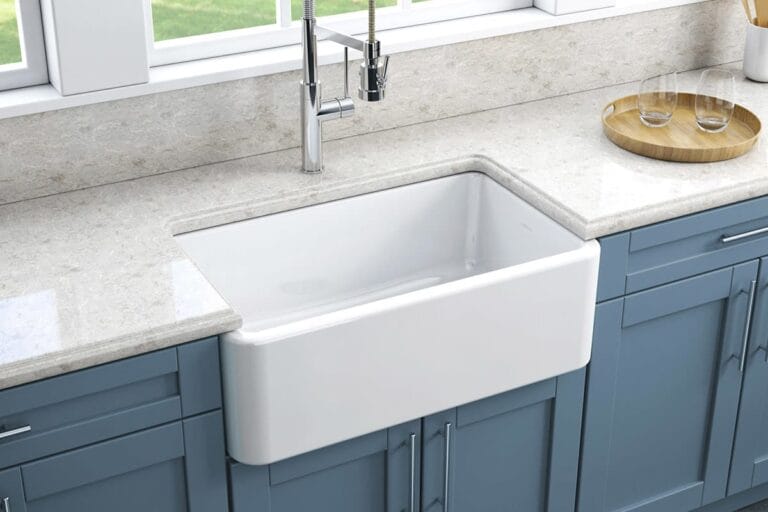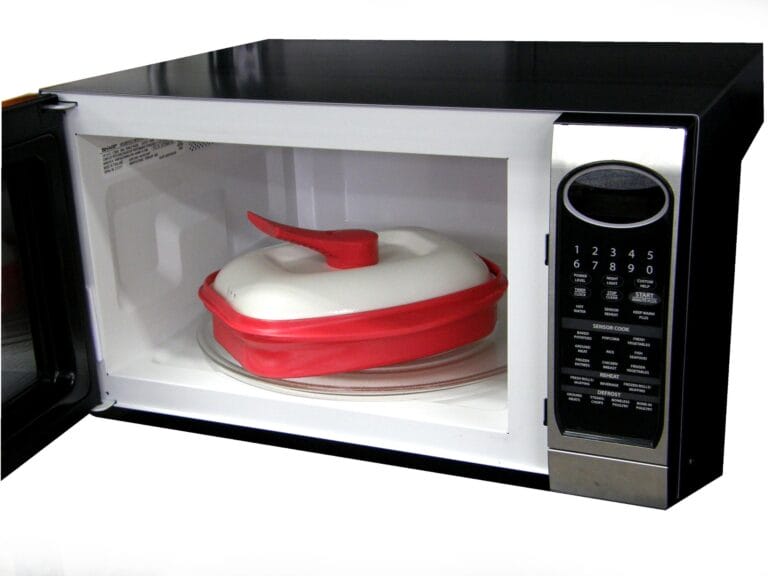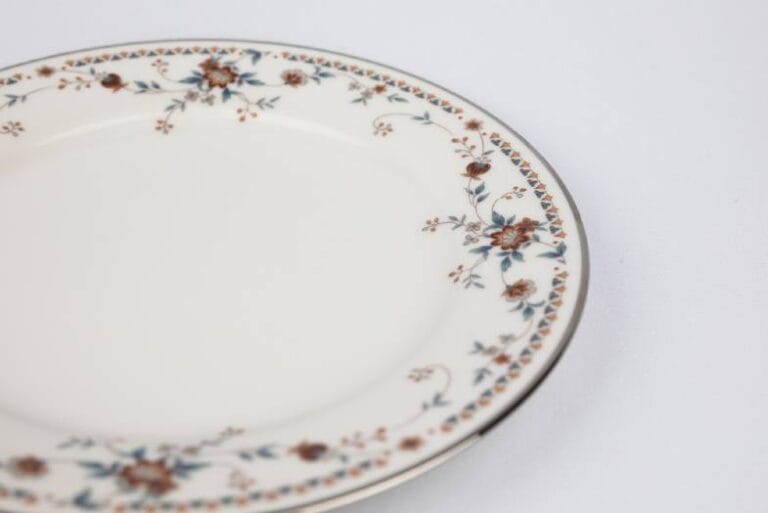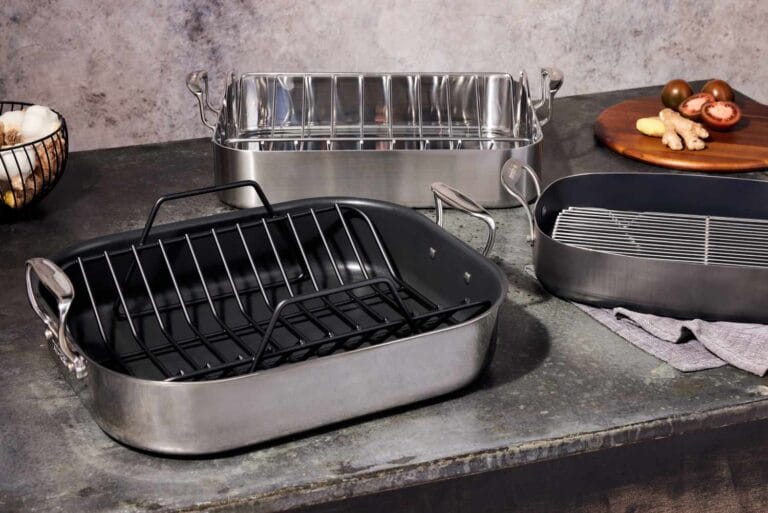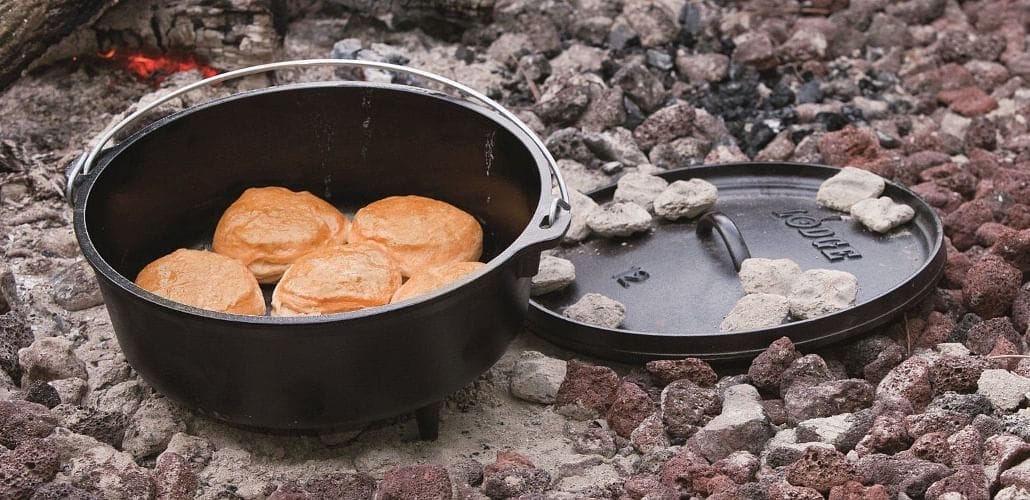
Are there any safety precautions when using a Dutch oven? You may be thinking that cooking with a Dutch oven is as simple as throwing some ingredients together and letting them simmer to perfection.
While that is true to some extent, it’s important to keep in mind a few safety measures to ensure a smooth and accident-free cooking experience.
Now, you might be wondering, why safety precautions even matter when cooking with a Dutch oven. Well, my friend, safety always comes first, no matter what you’re doing.
Whether you’re a seasoned chef or just starting out in the kitchen, knowing how to handle and operate your cooking equipment is crucial for your well-being and the success of your dishes.
So, in this article, we’ll dive into the world of Dutch ovens and explore the safety precautions you should take to make your cooking adventures safe and enjoyable.
From handling the hot pot to ensuring proper ventilation, we’ll cover it all. So, grab your apron, and let’s get started on this safety journey!
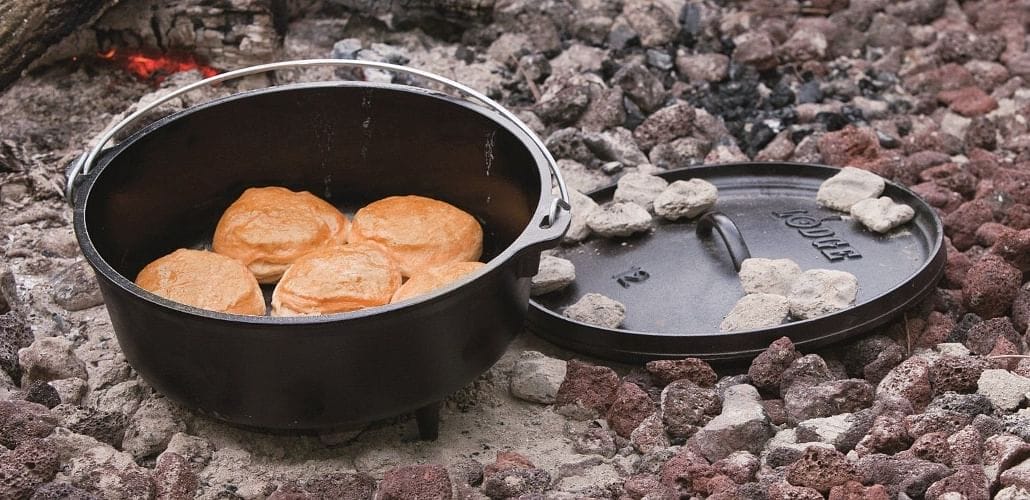
Are There Any Safety Precautions When Using a Dutch Oven?
Dutch ovens are versatile cooking vessels that have been used for centuries. From stovetop to oven, these heavy-duty pots are perfect for simmering soups, slow-cooking stews, and even baking bread.
While Dutch ovens are generally safe to use, there are a few precautions you should keep in mind to ensure a secure cooking experience.
Here is a video guide on how you can use the Dutch Oven perfectly as a begginer.
Now we will explore seven essential safety precautions when using a Dutch oven and how to use them to your advantage.
1. Choosing the Right Surface
When using a Dutch oven, it’s crucial to select the right cooking surface. Dutch ovens are typically made with cast iron, which can be quite heavy.
To prevent accidents or injuries, it’s important to use a sturdy and stable cooking surface. Opt for a flat and heat-resistant stovetop or a secure and level surface when cooking over an open fire.
It’s also important to consider the size and weight of the Dutch oven. Make sure the cooking surface can handle the weight, and ensure there is enough space for the pot to sit securely without the risk of tipping over. By choosing the right surface, you minimize the risk of accidents and ensure safe and hassle-free cooking.
2. Handling Hot Surfaces
When using a Dutch oven, it’s inevitable that the pot and its components will become hot. To prevent burns or accidents, it’s crucial to handle hot surfaces with care.
Always use oven mitts or heat-resistant gloves when handling the pot or its lid. Do not touch any part of the Dutch oven without proper protection.
It’s also important to use caution when removing the lid. Due to the high temperature of the contents inside, steam can build up and cause burns.
To avoid steam burns, tilt the lid away from you when removing it, allowing the steam to escape in the opposite direction. Always exercise caution and take your time when handling hot surfaces.
3. Using Heat-Resistant Utensils
When cooking with a Dutch oven, it’s imperative to use heat-resistant utensils. The high temperatures produced by the pot can cause regular utensils to melt or warp, posing a risk of injury or contamination. Opt for silicone, metal, or wooden utensils that are designed to withstand high heat.
Avoid using plastic or rubber utensils, as they can melt and mix with the food, compromising its safety and taste. By using heat-resistant utensils, you can cook with confidence, knowing that your tools are safe for both you and your food.
4. Monitoring the Heat
Proper heat management is vital when using a Dutch oven. It’s essential to regulate the temperature to prevent overheating, burning, or scorching.
When cooking on a stovetop, ensure the flame or heat source is set at an appropriate level. Too high of a heat setting can quickly lead to burning or uneven cooking.
When using a Dutch oven in the oven, preheat the oven to the desired temperature before placing the pot inside. Keep an eye on the cooking progress and adjust the temperature as necessary. Regularly monitoring the heat ensures that your food cooks evenly and reduces the risk of accidents or mishaps.
5. Proper Ventilation
When using a Dutch oven, it’s important to ensure proper ventilation. As the pot cooks, steam and heat can build up inside. Without adequate ventilation, pressure can increase, potentially causing the lid to become difficult to remove or even explode, leading to serious injury.
To prevent this, ensure there is a small gap or space between the lid and the pot to allow steam to escape. This will help regulate the pressure and prevent excessive buildup. Always exercise caution when removing the lid, as mentioned earlier, to avoid steam burns.
6. Cleaning and Maintenance
To ensure the longevity and safety of your Dutch oven, proper cleaning and maintenance are essential. After each use, allow the pot to cool before cleaning. Avoid using harsh abrasives or metal scrubbers, as this can damage the seasoned surface.
Instead, use warm water and a soft sponge or brush to gently clean the pot. If food is stubbornly stuck, you can use a small amount of gentle dish soap. After cleaning, thoroughly dry the Dutch oven to prevent rust or corrosion.
Regularly inspect the pot for any cracks or damage. A damaged Dutch oven may pose safety risks during cooking. If you notice any cracks or significant wear, consider replacing the pot to ensure continued safe usage.
7. Proper Storage
Proper storage is essential to maintain the safety and durability of your Dutch oven. After thoroughly cleaning and drying the pot, store it in a cool and dry location. Avoid stacking heavy objects on top of the pot, as this can cause damage or warping.
If you have multiple Dutch ovens, consider using protective layers, such as silicone liners or towels, to prevent scratches or contact between pots. Additionally, store the pot with the lid slightly ajar to allow proper air circulation and prevent any moisture buildup.
By following these safety precautions, you can confidently and safely use your Dutch oven for a wide variety of delicious meals.
Additional Safety Tips and Advice
1. Using a Dutch Oven Outdoors
When using a Dutch oven outdoors, especially over an open fire, there are additional safety measures to consider. Ensure there is adequate clearance around the fire pit or cooking area to prevent accidental fires. Always have a fire extinguisher or bucket of water nearby in case of emergencies.
Additionally, take precautions to protect yourself from smoke inhalation by cooking in a well-ventilated area. Be mindful of wind direction to prevent smoke from blowing directly into your face or eyes. And remember, never leave a Dutch oven unattended, whether indoors or outdoors.
2. Transporting a Dutch Oven
Transporting a Dutch oven, particularly when it contains hot food, requires careful handling. Use sturdy oven mitts or heat-resistant gloves to carry the pot. Secure the lid tightly to prevent any spills or accidents during transportation.
If you need to travel a considerable distance with a Dutch oven, consider using a padded carrying case specifically designed for Dutch ovens. These cases provide extra protection and insulation, ensuring the safety of both the pot and its contents.
3. Seasoning Your Dutch Oven
One crucial aspect of Dutch oven maintenance is seasoning. Seasoning involves coating the inside of the pot with cooking oil to create a non-stick surface and protect the iron from rust. Regularly seasoning your Dutch oven not only improves its cooking performance but also ensures its safety.
To season the Dutch oven, apply a thin layer of cooking oil to the inside of the pot and lid. Preheat the oven to around 350°F (175°C) and place the oiled Dutch oven inside, upside down.
Let it bake for about an hour, then turn off the heat and allow the pot to cool inside the oven. This process helps to create a seasoned surface that is both non-stick and rust-resistant.
In summary, using a Dutch oven is a safe and enjoyable cooking experience when you follow the proper safety precautions. Choose the right surface, handle hot surfaces with caution, use heat-resistant utensils, monitor the heat, ensure proper ventilation, clean and maintain your Dutch oven, and store it properly. By incorporating these safety tips into your Dutch oven cooking routine, you can cook delicious meals while minimizing the risk of accidents or injuries. Remember to always prioritize safety and enjoy your culinary adventures with peace of mind.
Frequently Asked Questions
Welcome to our guide on using a Dutch oven safely. Here, we address important safety precautions to keep in mind while using this versatile cooking vessel. Read on to learn more!
1. What are the safety precautions when using a Dutch oven?
When using a Dutch oven, it is essential to follow some safety precautions to ensure a safe and enjoyable cooking experience. Firstly, always use proper oven mitts or heat-resistant gloves when handling a hot Dutch oven. The cast iron material retains heat, making the pot extremely hot to the touch.
Additionally, be cautious of the hot lid and handle, as these can cause burns if touched without protection.
Another safety measure is to place the Dutch oven on a stable and heat-resistant surface, ensuring it will not accidentally tip over. It is recommended to use a trivet or heatproof mat underneath to protect countertops or tables.
Lastly, never place a cold Dutch oven directly onto a heated stove or flame, as the sudden temperature change can cause the pot to crack. Always preheat the pot gradually to avoid any damage or accidents.
2. How can I prevent burns when using a Dutch oven?
To prevent burns when using a Dutch oven, taking a few precautions is necessary. Firstly, always handle the pot with oven mitts or heat-resistant gloves to protect your hands from the hot surface. Remember to keep them on until the pot has cooled down completely.
Secondly, never touch the hot lid or handle without proper protection. These parts can become extremely hot during cooking and cause severe burns if touched with bare hands.
Another way to prevent burns is by using long cooking utensils with heat-resistant handles. This will allow you to stir or remove food from the pot while maintaining a safe distance from the heat.
Additionally, it is advisable to have a clear workspace around the Dutch oven, ensuring no flammable materials are nearby. By following these precautions, you can minimize the risk of burns and accidents while cooking with a Dutch oven.
3. Is it safe to lift a hot Dutch oven with one hand?
No, it is not safe to lift a hot Dutch oven with one hand. Cast iron Dutch ovens can be quite heavy, especially when filled with food. Attempting to lift the pot with one hand can put excessive strain on your wrist or fingers, leading to injuries or accidents. It is always recommended to use both hands when lifting a hot Dutch oven or ask for assistance if needed.
When lifting the Dutch oven, make sure to bend your knees and use your leg muscles for support. This will help avoid strain on your back.
Keep a firm grip on both sides of the pot, using oven mitts or heat-resistant gloves for protection. By using both hands and practicing proper lifting techniques, you can ensure a safe and comfortable cooking experience with your Dutch oven.
4. Can I use a Dutch oven in the oven?
Yes, a Dutch oven is designed to be used in the oven. In fact, it is one of the primary ways to utilize its versatile cooking capabilities. The cast iron material of a Dutch oven allows for even heat distribution, making it ideal for baking and roasting. However, there are a few precautions to keep in mind when using a Dutch oven in the oven.
Firstly, always check the manufacturer’s instructions to ensure the Dutch oven is oven-safe. Most Dutch ovens are designed to withstand high temperatures, but it’s best to verify before use. Secondly, when placing the Dutch oven in the oven or removing it, remember to use oven mitts or heat-resistant gloves as the pot will be extremely hot.
Place the Dutch oven on a stable surface to avoid any accidental spills or burns. By following these safety measures, you can confidently use your Dutch oven in oven for delicious meals and baked goods.
5. Are there any precautions I should take while cleaning a Dutch oven?
When cleaning a Dutch oven, it is essential to take a few precautions to maintain its longevity and prevent damage. Firstly, avoid using abrasive scrub brushes or harsh cleaning agents that can strip away the seasoning of the pot. Instead, opt for a soft sponge or cloth and mild dish soap to gently clean the Dutch oven.
Never soak a Dutch oven in water for an extended period, as this can cause rusting. Instead, rinse the pot with warm water immediately after use and dry it thoroughly. To remove stubborn food residue, you can soak the Dutch oven briefly, but make sure to dry it completely afterward. Lastly, always store your Dutch oven in a dry place to prevent moisture-related issues and maintain its quality over time.
Using a Dutch oven can be fun, but safety is important too. Remember to always use oven mitts when handling the hot pot, and be careful not to burn yourself. Don’t forget to place the Dutch oven on a heat-resistant surface to prevent any accidents.
It’s also crucial to use the right amount of charcoal for cooking, so follow the recipe instructions. Finally, make sure to clean and maintain your Dutch oven properly to keep it in good condition.
Overall, a Dutch oven can be a great tool in the kitchen or camping, but it’s important to prioritize safety. By following these precautions, you can enjoy cooking delicious meals while keeping yourself and others safe from any potential hazards.

